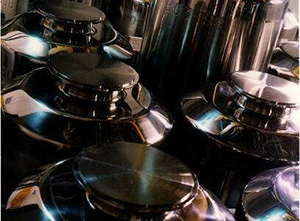Extracting more energy
Although used nuclear fuel is described as 'spent', the technology behind today’s reactors can only take advantage of a very small percentage of the available energy value within the fuel rods. Spent fuel contains residual U235, plutonium (created when U238 absorbs a neutron) and other high-level wastes from the fission process.
Reprocessing is the chemical separation of spent fuel into these three components as follows:

- The U235 can be re-enriched to become reactor fuel.
- Plutonium, as an oxide, can be blended with depleted uranium from enrichment processes to form mixed oxide fuel (MOX). MOX fuel is equivalent to uranium oxide fuel enriched to about 4.5% U235. It can be used in pressurized water reactors and is usually combined in the reactor core with regular uranium fuel in a one-third MOX, two-thirds uranium mix.
- The remaining high-level waste from reprocessing is a liquid and must be solidified. It also generates a considerable amount of heat and requires cooling. It is vitrified (or mixed) with special glass and encapsulated in heavy stainless steel cylinders. It remains in secure storage awaiting eventual disposal deep underground.
Disadvantages
Despite the evident benefits of using reprocessed fuel to conserve resources and reduce high-level waste, there several significant impediments to more widespread use.
- Economics – The cost of reprocessing is markedly higher than producing fuel from natural uranium, particularly when the price of uranium is low.
- Non-proliferation policies – In some countries, political policies governing non-proliferation prohibit reprocessing of spent fuels.
Consequently, today only about 50 reactors located in Belgium, Germany, France, Switzerland and Japan are licensed to use MOX fuel. Fewer than 30 are actively using it at the present time.






